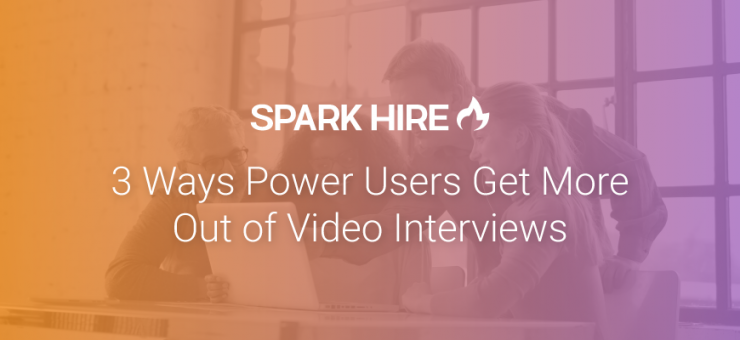Video interview technology is still relatively new, but in the “new normal”, demand has skyrocketed. Our research with HR.com revealed 52 percent of the 526 companies we surveyed use video interviews. And just over half of those organizations started using the tool within the past two years.
So, there aren’t (yet) many video interview experts. A lot of hiring teams are still trying to determine what works best for their company. This means understanding what differentiates high-performing video interview users from those who are still figuring things out gives you a significant advantage in talent acquisition.
In the race to sort through talent efficiently and effectively, the better your screening, the faster you can bring top talent into your organization. So we dug into the data and found what sets high performers (those who report feeling comfortable with video interviews and rated the technology as “Good” or “Excellent”) apart from other users. Here are three ways high performers set themselves apart and how you can apply their strategies to improve your video interview process:
They use a dedicated video interview platform.
There is a big difference between using a dedicated video interview platform and interviewing through a video chat platform like Skype or Google Hangouts. Dedicated platforms created specifically for hiring and high performers understand this nuance. In fact, 45 percent of high performers use a dedicated platform compared to just 17 percent of low performers.
Their success and satisfaction comes from using technology that provides more options and make sharing tasks easier and faster. For example, dedicated platforms foster collaboration, assist with scheduling, and maximize employer branding. These benefits let HR and hiring professionals focus on other pressing responsibilities.
How to be a video interview high performer
One of the hardest parts of talent acquisition is balancing personalization and automation. Everyone wants to save time but not at the cost of the candidate experience. With a dedicated video interview platform, you can embed videos about your company into automated communications so you’re getting the best of both worlds.
Instead of sending a templated email that’s just text, include video messages from leaders. Record a short welcome video from the CEO to show candidates company leaders are personable and available. This creates a candidate experience that resonates with job seekers but doesn’t require separate technology or consume a great deal of anyone’s time.
In their own words, have leaders briefly talk about topics such as:
- Leadership styles in the organization
- The company mission
- Team dynamics
- Why they’re proud of the company
- The company’s future direction
- What they value in employees
They use one-way video interviews.
Many video interview users don’t take advantage of one-way video interviews. They only use live interviews to evaluate candidates who live out of town.
While video interviews provide more information than phone interviews and are more convenient for everyone involved, one-way video interviews allow you to more quickly and efficiently assess candidates at a distance.
One-way video interviews enable candidates to record their responses on their own time and your team is then able to review and collaborate later. Even among high-performers, the use of one-way video interviews will give you a leg up as a mere twenty-three percent of them use this type of interview, compared to even less (12 percent) of low performers.
How to be a video interview high performer
When using one-way video interviews as an early screen, look to discover information you can’t get from a resume or application, such as indication of cultural fit. Identify aspects of your company that unite your employees. Then form questions that reveal if these traits or values resonate with candidates.
These qualities or interests don’t have to relate to what your company does directly. You’re looking for clues a candidate will fit in with the rest of the team. Consider how various factors play into your company culture, for example:
- If your office is full of Harry Potter fans, ask candidates what Hogwarts house they would be in to gain insights about their personality.
- If your company values community service, ask what organizations candidates are involved with to see what social issues matter most to them.
- Ask candidates about the accomplishment they’re most proud of. Watching how and when they light up recounting their story reveals what motivates them.
They create a video interview library.
Sourcing candidates is time-consuming and frustrating. Video interviews allow you to build a qualified talent pool that only your organization can draw from. In fact, when asked what the advantages of video interviews are, at least one in four high performers said having video logs for future reference.
When you receive a video interview from a skilled candidate who isn’t right for your current opening, file it away for later. If the perfect role opens up in the future, you can reach out to that candidate and get them started with the hiring process.
How to be a video interview high performer
Give your hiring managers access to all your saved video interviews. Even if the candidate applied for a position with the customer service team, they could be a great fit for the sales team. Make sure you have clear notes on each candidate so your hiring manager can easily see if the individual shows high potential for their open role.
Include the following information in your notes about candidates:
- All high-value experience and skills, not just the ones relating to the original position
- How far the candidate got in the hiring process
- Any feedback you gave the candidate to see how much they’ve developed
- What was most impressive about the candidate as an individual
___












